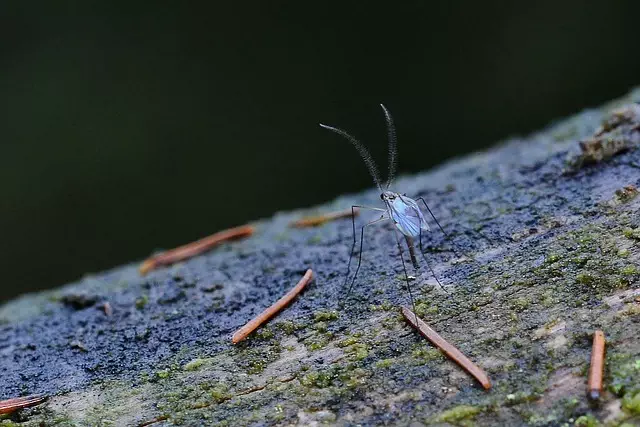Mosquitoes significantly affect human health due to their breeding habits and disease transmission. Understanding their behaviors allows for targeted control strategies like eliminating standing water and using insecticides, natural predators, and advanced technologies. A holistic approach integrating environmental factors and biological processes is crucial for effective mosquito management while minimizing ecological impacts. Modern techniques include genetically modified mosquitoes, Integrated Pest Management (IPM), geospatial mapping, and targeted treatments. IPM focuses on habitat manipulation, biological controls, and precise insecticide applications to prevent long-term mosquito population growth. Eco-friendly methods reduce chemical exposure, benefit wildlife, and manage breeding grounds effectively. Community involvement through education enhances the success of professional control measures, fostering a collaborative effort for sustainable mosquito control.
Professional mosquito control is a complex yet vital field, crucial for maintaining public health and quality of life. Mosquitoes, beyond being a nuisance, pose significant risks through disease transmission. This article delves into comprehensive strategies for mosquito management, exploring traditional and modern techniques, environmental considerations, and integrated pest management (IPM) approaches. By understanding mosquito behavior and habitat, we can implement targeted treatments while fostering community involvement for sustainable and effective mosquito control.
Understanding Mosquitoes: Behavior and Habitat

Mosquitoes are more than just a nuisance; they’re intricate creatures with distinct behaviors and habitats that play a crucial role in their impact on human health and well-being. Understanding these aspects is fundamental when it comes to effective mosquito control. These flying insects prefer humid environments, often breeding in stagnant water sources like ponds, buckets, or even small puddles. They are highly attracted to carbon dioxide, heat, and certain chemicals found in perspiration, making outdoor activities during dawn and dusk particularly inviting to them.
Knowing their preferences allows professionals to implement targeted strategies. Mosquito control measures can include eliminating standing water, using insecticides, and introducing natural predators like fish or birds. In the context of mosquito control, a holistic approach that considers both environmental factors and biological processes is essential for managing these pests effectively while minimizing potential ecological impacts.
The Impact of Mosquitoes on Health and Society

Mosquitoes, though often overlooked, have a profound impact on both individual health and societal well-being. Beyond being a nuisance during outdoor activities, these tiny creatures pose significant risks, primarily through the transmission of various diseases. Zika virus, West Nile virus, and Dengue fever are just a few examples that underscore the importance of mosquito control. In populated areas, where mosquitoes can breed rapidly in stagnant water, the potential for disease outbreaks increases, leading to public health crises.
On a societal level, mosquito-borne illnesses can disrupt communities, impact economies, and even shape migration patterns. Effective mosquito control strategies are crucial not just for mitigating these health risks but also for fostering safe and sustainable environments where people can thrive. By implementing integrated pest management approaches that include source reduction, biological controls, and targeted applications of insecticides, communities can reduce mosquito populations and create healthier living spaces.
Traditional Mosquito Control Methods

In the realm of mosquito control, traditional methods have long been employed to combat these pesky insects. One common approach involves the use of chemical pesticides, which are effective in reducing mosquito populations but may also pose risks to human health and the environment. These chemicals can be sprayed in outdoor areas or applied as treatments in water bodies to kill larvae and adult mosquitoes. Another traditional tactic is the installation of screens on windows and doors, physically preventing mosquitoes from entering homes and buildings.
Additionally, some communities employ larvicide treatments, focusing on eliminating mosquito breeding grounds by targeting their larval stages. This involves applying biological or synthetic agents directly to standing water sources like ponds, buckets, or tire tracks. While these traditional methods offer solutions, they often require repeated applications and may not address the root causes of mosquito presence in an area. As a result, many modern mosquito control strategies are shifting towards more comprehensive and eco-friendly approaches.
Modern Techniques for Effective Mosquito Management

Modern techniques for effective mosquito management have come a long way, leveraging advanced technologies and scientific insights to combat these pesky insects. One game-changing approach is the use of genetically modified mosquitoes, where specific strains are engineered to reduce their populations by disrupting their breeding cycles. This method, while still in development, offers a promising solution to long-term mosquito control.
Additionally, integrated pest management (IPM) strategies combine biological, chemical, and environmental controls. Traps baited with attractive substances lure mosquitoes, while targeted applications of insecticides minimize the impact on non-target species. In today’s digital era, geospatial mapping and sensor technologies enable precise identification and treatment of mosquito breeding grounds, enhancing control efforts.
Integrated Pest Management (IPM) Approach to Mosquito Control

Integrated Pest Management (IPM) is a holistic approach to mosquito control that focuses on long-term prevention and minimal environmental impact. Instead of relying solely on chemical pesticides, IPM integrates various strategies such as habitat manipulation, biological controls, and targeted applications of insecticides. By understanding the mosquito life cycle and their preferred breeding grounds, professionals can take proactive measures to eliminate these sites, thereby reducing mosquito populations naturally.
This approach also includes monitoring and surveillance techniques to track mosquito activity and identify potential problems early on. Trained specialists use advanced tools and technologies to detect even small mosquito colonies, allowing for precise and effective treatment. By combining these methods, IPM offers a sustainable and eco-friendly solution for mosquito control, ensuring public health and safety while minimizing the ecological footprint.
Environmental Considerations in Mosquito Control Practices

In professional mosquito control practices, environmental considerations are paramount. Beyond simply eliminating mosquitoes, these methods aim to maintain ecological balance and minimize the impact on non-target species. Using eco-friendly techniques, such as targeted treatments and biological controls, helps reduce the use of harsh chemicals that could harm beneficial insects, birds, and other wildlife. For instance, understanding mosquito breeding grounds—like stagnant water in containers or wetlands—enables professionals to implement preventive measures, like removing standing water or applying larvicides specifically, reducing the need for widespread adulticide applications.
These environmentally conscious approaches not only protect local ecosystems but also contribute to public health by ensuring that control measures are safe and sustainable over time. In terms of Mosquito Control, adopting such strategies fosters a harmonious relationship between human needs and environmental preservation, ultimately leading to more effective and long-lasting solutions for mosquito management.
Targeted Treatments: Where and How to Apply Pesticides

When implementing mosquito control strategies, targeted treatments play a pivotal role in minimizing pest populations effectively. These methods involve precisely applying pesticides to specific areas where mosquitoes breed and rest, such as stagnant water sources, vegetation, and shaded regions. By focusing on these sites, professionals can significantly reduce mosquito habitats without unnecessary chemical exposure to other environments.
For optimal results, targeted treatments require careful consideration of the pesticide’s reach and residual effects. Experts use tools like sprayers, foggers, or larval additives, depending on the situation. In residential areas, spot-treating around windowsills, doors, and plant bases can be effective. For larger landscapes, a more comprehensive approach may involve treating edges of fields, woodlands, and bodies of water to disrupt mosquito breeding cycles and create a protective barrier against these pesky insects.
Community Involvement and Education for Sustainable Mosquito Control

Community involvement and education play a pivotal role in achieving sustainable mosquito control. Engaging local residents, businesses, and stakeholders is essential to understanding the unique ecological dynamics and challenges specific to each area. By empowering folks with knowledge about mosquito behavior, breeding grounds, and effective prevention methods, communities can actively contribute to reducing mosquito populations.
Educational initiatives can take various forms, such as workshops, community meetings, and online resources. These platforms provide valuable information on safe and eco-friendly practices, like proper waste disposal, water management, and the use of natural repellents. Armed with this knowledge, individuals become vigilant sentinels against mosquito breeding, fostering a collaborative effort that reinforces the effectiveness of professional mosquito control measures.
